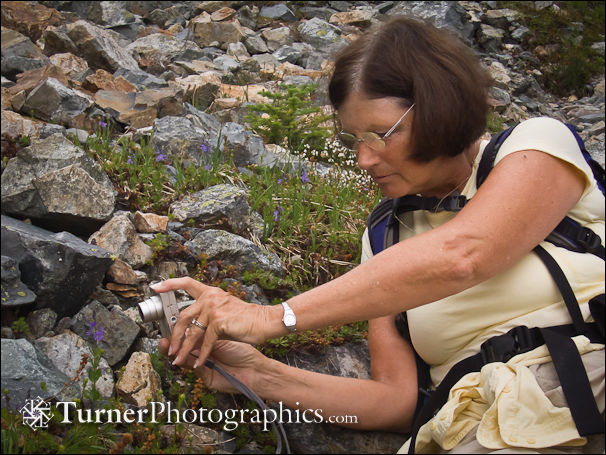Digital Photo Tip: Steady as She Goes
Pocket cameras give us the freedom to move around, compose quickly, and avoid using a heavy tripod. However, like almost everything in life, there are tradeoffs. One of the most critical is keeping the camera steady.

Holding the camera steady does more than just avoid blurry images. It’s also a way to make sure that you’re getting what you want in the frame and the horizon is level (unless you’re deliberately tilting it). I look carefully at the edges of the frame and either adjust the zoom or my framing to avoid unwanted and distracting elements. It’s hard to do that when your camera is waving around in the breeze at the end of an outstretched arm like I see so many snapshooters doing. Maybe it’s the control freak in me, but I want to know what I’m getting before I press the shutter.
Here are four steadiness tips:
- Find something solid to brace the camera on like a rock, tree trunk, the side of a building, the ground, or a crutch. The more solid the object the better, but anything that keeps your camera from waving around in the breeze is helpful. I’ll often place one edge of my camera against a solid object and then use a finger on my left hand under the lens to control the angle while I gently squeeze the shutter release with my right index finger. It’s easier than it sounds after just a little practice. For really long exposures like for a night landscape prop the camera on something solid – rocks, sticks, extra clothing – and then use the self-timer so you don’t jiggle the camera during the exposure.
- Brace the camera against your body with three points of contact. The three-point rule is something I learned in mountain climbing to help keep you glued to the rock or snow. With a camera it means holding on with both hands and then bracing against another body part. If your camera has a good viewfinder, like a SLR, then your forehead becomes the brace point. However, most pocket cameras have dismal viewfinders or none at all. I’ve braced my camera on my knee for low-angle shots, kneeling with one knee on the ground and one knee up for the camera.
- Plant your feet to steady your body. Instead of standing with your feet together side by side, place one foot in front of and to the side of the other. I usually turn my back foot out just a little and put most of my weight on it. Think about how you’d stand and brace yourself to keep from getting blown over in a strong wind.
- Hold your camera with both hands and place your elbows on something solid.
I use one of these techniques almost every time I shoot with my pocket camera or my iPhone camera. Unless I deliberately want a blurred effect, there’s not much point in making a photograph unless it’s going to be sharp. These tips work just as well with a SLR, too.


When I couldn’t see the screen in this summer’s brilliant sun I rediscovered my view-finder. Even though it doesn’t quite show all I find it useful. Now if needed I use it as that third-point bracing to keep still. At least the viewfinder lets me be sure I got the important stuff.